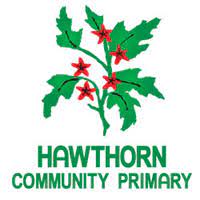RE (Religious Education)
At Hawthorn we learn about the diversity of all faiths and beliefs. We celebrate many different festivals throughout the year, such as Harvest, Hannukah, Divali, Christmas, Chinese New Year, Easter and May Day.
Throughout key stage 1, pupils explore Christianity and at least one other principal religion. They learn about different beliefs about God and the world around them. They encounter and respond to a range of stories, artifacts and other religious materials. They learn to recognise that beliefs are expressed in a variety of ways, and begin to use specialist vocabulary. Pupils ask relevant questions and develop a sense of wonder about the world, using their imaginations. They talk about what is important to them and others, valuing themselves, reflecting on their own feelings and experiences and developing a sense of belonging.
The aims of teaching RE in KS1 are for children to:
- Explore a range of religious stories and talk about their meanings
- Name and explore a range of celebrations
- Identify the importance, for some people, of belonging to a religion
- Reflect and consider religious and spiritual feelings
- Ask and respond to questions
- Identify what matters to them
- Reflect on how spiritual and moral values relate to their own behaviour
Throughout key stage 2, pupils learn about Christianity and at least two of the other principal religions, recognising the impact of religion and belief locally, nationally and globally. They make connections between differing aspects of religion and consider the different forms of religious expression. They consider the beliefs, teachings, practices and ways of life central to religion. They learn about sacred texts and other sources and consider their meanings. They begin to recognise diversity in religion, learning about similarities and differences both within and between religions and beliefs and the importance of dialogue between them. They extend the range and use of specialist vocabulary. They recognise the challenges involved in distinguishing between ideas of right and wrong, and valuing what is good and true. They communicate their ideas, recognising other people's viewpoints. They consider their own beliefs and values and those of others in the light of their learning in religious education.
The aims of teaching RE in KS1 are for children to:
- Describe the key aspects of religion
- Describe the variety of practices and ways of life in religions
- Identify and begin to describe the similarities and differences within and between religions
- Use specialist vocabulary in communication their knowledge and understanding
- Use and interpret information about religions from a range of sources
- Reflect on what it means to belong to a faith community
- Discuss their own and others’ views of religious truth and belief, expressing their own ideas
- Reflect on ideas of right and wrong.
